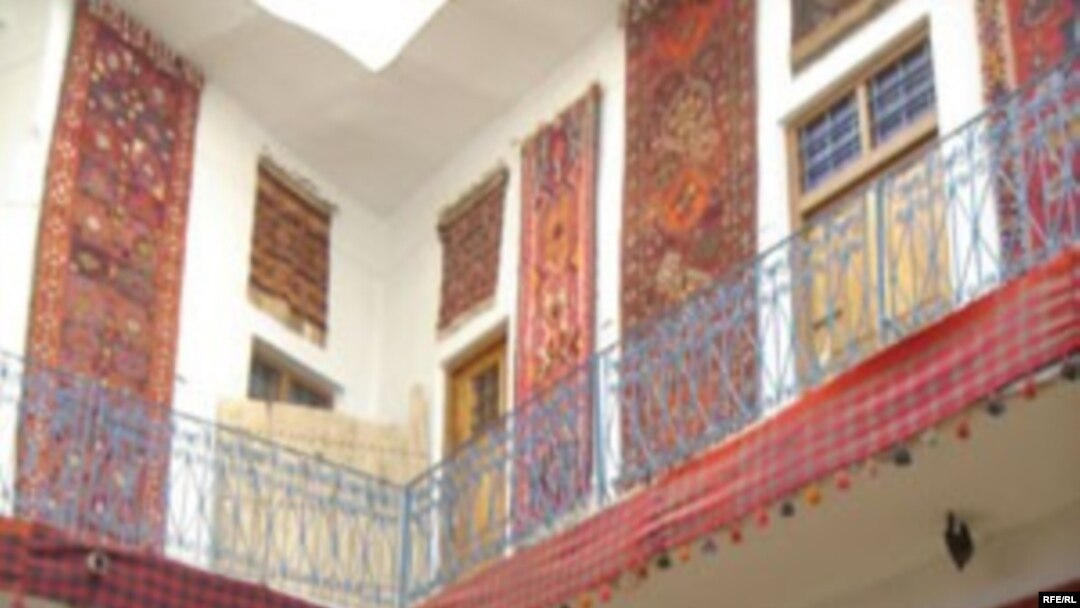Irbil, 13 December 2005 (RFE/RL) - The plains of Iraq are dotted with giant mounds that archeologists call "tals," sites that have grown higher and higher over the millennia, as people built new homes upon the ruins of older ones.
Much of what we now know of ancient Mesopotamian civilization comes from excavations of such sites.
But Iraq's archeological sites -- some of the richest in the world -- attract few researchers today. The problem is security, illustrated by the kidnapping on 25 November of the German archeologist Susanne Osthoff. She is still being held captive and will be killed, insurgents say, unless Germany breaks off relations with Baghdad.
But officials in Kurdish-administered northern Iraq say their region is safe enough for excavation work. And one fascinating place to probe is the 36-meter-high tal in the center of Irbil, a citadel that historians and archeologists say has been continuously inhabited for 6,000 years. Below the homes that now stand on the hill are the remains of ancient civilizations still waiting to be explored.
Kanan Mufti, general director for antiquities in the western Kurdish region, says that probes sunk deep into the hill have shown evidence of layers of successive civilizations. Not enough work has been done to be able to identify who exactly those inhabitants were, but among the peoples who have lived in the Irbil region are Akkadians, Sumerians, Medes, Persians, Greeks, Parthians, and Abbasids. All have been attracted by Irbil's location, on a fertile plain at the junction of two rivers and in the foothills of the Zagros Mountains.
Mufti says the successive names of Irbil give some idea of this history. Sumerian scripts refer to it as Urbylon. The Assyrians called it Arbaillo and considered it one of their most important cities. The Medes knew it Hadeap. A historian accompanying Alexander the Great named it Arbella. And the Kurds still call it Hawler, probably meaning "the place where the sun is worshipped" since the name is thought to derive from the ancient Kurdish word "helio" (sun).
A Home Unfit To Live In
As Irbil, now the capital of the Kurdish autonomous region, became the densely populated city it is now, the citadel itself became less popular, with its inhabitants abandoning their homes for more spacious apartments in the city below.
But in the 1980s it again became a citadel, as Kurds sought refuge from the wars waged by Saddam Hussein against the Kurds. “More than 4,000 or 5,000 people live in the citadel right now," says Lolan Mustefa, curator of a textile museum that he established in one of the many large homes in the citadel. Almost all of them fled there while Hussein’s troops were razing whole tracts of Kurdish land in campaigns aimed at clearing border areas during the war with Iran and at ending a Kurdish insurgency.
One of those who found shelter here is Abdullah Ahmad Aziz. He fled to Irbil in 1987 along with many members of his tribe after his village in the mountains was gassed. He settled in the citadel “because the houses were empty and cheaper than in other places. And most of our relatives were there. There were houses for one Iraqi dinar or two Iraqi dinars [about $6] a month."
Aziz now works as a police officer. Many of the other men who live in the citadel work as laborers or run small businesses. After so many years, the citadel has become their home. But the houses “aren't worth living in,” Aziz says. “Water drips from the ceiling, I’ve put up plastic sheeting to stop the dripping. And in the rooms above [us], I have also put plastic sheeting to stop mice and scorpions and snakes from coming down…On three occasions we have killed snakes coming down through the ceiling."
Aziz says he has nowhere else to go. When he moved to the citadel, he came with eight members of his family; today, his extended family has grown to more than 40, more than his small land holdings in his native village can support.
These displaced Kurds hope the government will one day give them enough compensation to afford better housing in Irbil.
Making A Refuge A Home
International interest in the citadel as an archeological treasure could help make that a possibility.
The UN's cultural agency, UNESCO, is financing preliminary studies into the possibility of renovating parts of the citadel. Many in Irbil hope the result will be a well-restored old town and some careful excavations of the site.
That is also the hope of Mustefa, who studied anthropology in the United States and founded the Textile Museum to help preserve the rich carpet-weaving heritage of the nomadic tribes that still live in the mountains. Each day up to 140 visitors, most of them Kurds, come to look at the brilliantly colored collection of carpets that hang on the walls of the museum.
"According to the director of antiquities and the government of Kurdistan, UNESCO is coming to renovate the houses and to make [the citadel] a tourist attraction, with museums and cafes and restaurants and so on,” he says, as he stands on a balcony and looks out over the houses, mosque, traditional public bathhouse, and crumbling mud-brick hovels that make up the small town inside the citadel's walls. “But they want to have some people still living here."
That would maintain the citadel’s millenia-long tradition of continuous habitiation.
Irbil’s citadel is just one of numerous potential archeological sites throughout the Kurdish region. A study carried out decades ago by Baghdad catalogued more than 3,000 sites. Mufti, the director of antiquities, says fewer than 25 have been excavated, because Hussein generally forbade archeological digs in the Kurdish region in an effort to deny Kurds evidence of a cultural heritage distinct from that of other Iraqis.


